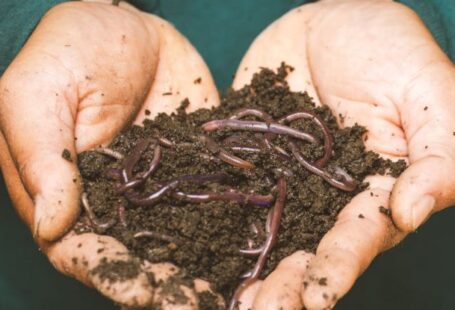Sustainable textiles have become increasingly popular in the home decor industry as consumers are becoming more mindful of the environmental impact of their purchases. From bedding to curtains, sustainable home textiles offer a greener alternative that not only benefits the planet but also promotes healthier living spaces for individuals and families. In recent years, there has been a surge in innovative sustainable textile options that cater to various tastes and preferences. Let’s delve into the latest trends in sustainable home textiles that are revolutionizing the way we decorate our living spaces.
Eco-Friendly Materials
One of the prominent trends in sustainable home textiles is the use of eco-friendly materials such as organic cotton, linen, hemp, and bamboo. These natural fibers are grown without harmful chemicals and pesticides, making them a safer and more sustainable choice for the environment. Organic cotton, in particular, has gained popularity for its softness and durability, making it an ideal material for bedding, towels, and upholstery. Linen is another eco-friendly option known for its breathability and moisture-wicking properties, making it perfect for curtains and upholstery fabrics. Bamboo, a fast-growing plant, is also being used to create soft and luxurious textiles that are not only sustainable but also biodegradable.
Recycled and Upcycled Textiles
The concept of recycling and upcycling has extended to the textile industry, leading to a rise in the popularity of recycled and upcycled home textiles. Manufacturers are repurposing post-consumer waste such as plastic bottles, denim, and even discarded textiles to create new and innovative products. Recycled polyester, for example, is made from recycled plastic bottles and is being used to make durable and versatile textiles for various home decor items. Upcycled textiles involve transforming old or unused fabrics into new products, giving them a second life and reducing waste in the process. These sustainable practices not only minimize the environmental impact but also add a unique and creative touch to home decor.
Natural Dyes and Low-Impact Printing
Another trend in sustainable home textiles is the use of natural dyes and low-impact printing methods to create vibrant and eco-friendly designs. Traditional textile dyeing processes often involve harmful chemicals that can pollute water sources and harm the ecosystem. In contrast, natural dyes derived from plants, fruits, and vegetables offer a non-toxic and sustainable alternative for coloring textiles. These dyes not only produce beautiful hues but also promote a more environmentally conscious approach to textile production. Low-impact printing techniques, such as digital printing and water-based inks, are also becoming popular for creating intricate designs on fabrics without the use of harsh chemicals or excessive water consumption.
Biodegradable and Compostable Textiles
As the demand for sustainable products continues to grow, biodegradable and compostable textiles have emerged as a leading trend in the home decor industry. These textiles are made from natural materials that can break down organically over time, reducing the need for landfill disposal and minimizing environmental pollution. Fabrics such as jute, hemp, and organic wool are biodegradable options that are not only durable but also eco-friendly. Compostable textiles, on the other hand, are designed to decompose fully in a composting environment, further reducing waste and promoting a circular economy. By incorporating biodegradable and compostable textiles into their homes, consumers can contribute to a more sustainable future while enjoying stylish and eco-friendly decor.
Innovative Textile Technologies
Advancements in textile technologies have paved the way for innovative sustainable solutions that are revolutionizing the home decor market. From performance fabrics that repel stains and odors to smart textiles that regulate temperature and moisture, these cutting-edge materials offer both functionality and sustainability. Antimicrobial textiles made from natural fibers like bamboo and hemp are gaining popularity for their ability to inhibit the growth of bacteria and allergens, promoting a healthier indoor environment. Additionally, solar-reflective textiles are being developed to reduce energy consumption by reflecting sunlight and heat, making them ideal for curtains and upholstery in energy-efficient homes. By embracing these innovative textile technologies, consumers can create stylish and sustainable living spaces that prioritize both comfort and environmental responsibility.
In conclusion, the latest trends in sustainable home textiles are reshaping the way we decorate our living spaces by offering eco-friendly, stylish, and innovative solutions for environmentally conscious consumers. From eco-friendly materials and recycled textiles to natural dyes and biodegradable options, the sustainable home decor industry is evolving to meet the growing demand for greener products. By incorporating these trends into their homes, consumers can not only reduce their environmental footprint but also create beautiful and sustainable living spaces that reflect their commitment to a healthier planet. Embracing sustainability in home textiles is not just a trend but a conscious choice towards a more mindful and eco-friendly lifestyle.





